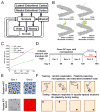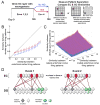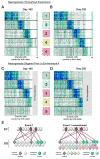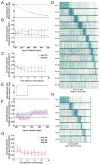Computational influence of adult neurogenesis on memory encoding
- PMID: 19186162
- PMCID: PMC2670434
- DOI: 10.1016/j.neuron.2008.11.026
Computational influence of adult neurogenesis on memory encoding
Abstract
Adult neurogenesis in the hippocampus leads to the incorporation of thousands of new granule cells into the dentate gyrus every month, but its function remains unclear. Here, we present computational evidence that indicates that adult neurogenesis may make three separate but related contributions to memory formation. First, immature neurons introduce a degree of similarity to memories learned at the same time, a process we refer to as pattern integration. Second, the extended maturation and change in excitability of these neurons make this added similarity a time-dependent effect, supporting the possibility that temporal information is included in new hippocampal memories. Finally, our model suggests that the experience-dependent addition of neurons results in a dentate gyrus network well suited for encoding new memories in familiar contexts while treating novel contexts differently. Taken together, these results indicate that new granule cells may affect hippocampal function in several unique and previously unpredicted ways.
Figures






References
-
- Aimone JB, Wiles J, Gage FH. Potential role for adult neurogenesis in the encoding of time in new memories. Nature Neuroscience. 2006;9:723–727. - PubMed
-
- Aimone JB, Wiskott L. Computational Modeling of Adult Neurogenesis. In: Gage FH, Kempermann G, Song H, editors. Adult Neurogenesis. Woodbury, NY: Cold Spring Harbor Laboratory Press; 2008. pp. 463–481.
-
- Altman J, Das GD. Autoradiographic and histological evidence of postnatal hippocampal neurogenesis in rats. J Comp Neurol. 1965;124:319–335. - PubMed
Publication types
MeSH terms
Grants and funding
LinkOut - more resources
Full Text Sources
Other Literature Sources
Medical

